No forager wants to become a cautionary tale. These 15 rules for foraging safely will help you come back from your adventure in good health.
15 Rules for Foraging Safely
Walking out into the forests or fields and coming back with an armload of food and medicine is a rewarding experience. With every new plant you learn to identify and use, you become more empowered to care for yourself and your family. You also become less dependent on—and less vulnerable to—big, corporate entities. But this expanding freedom also comes with the responsibility of ensuring your own safety.
You May Also Enjoy:
Hackberries: Nature’s Grape-Nuts for Winter Survival
Poisonous plants exist. Some of them look like the good plants. Some plants are good or bad, depending on the quantity. And even the safest plants can harm if harvested from a contaminated environment.
I want to help you maximize your rewards while minimizing your risks. That’s why I am presenting you with 15 rules for safe wildcrafting. The more experienced you become, the more you’ll see exceptions to the rules and know when to ignore them. But I advise the novice to follow them all, because nobody wants to become a cautionary tale.
1) Go Slowly
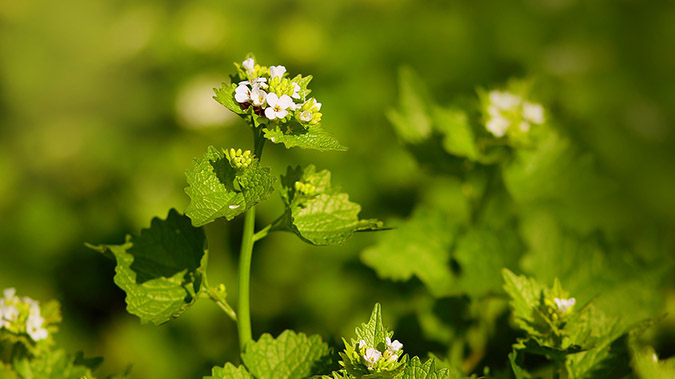
All mustards are edible, but you should still go slowly with any new plant.
The No. 1 rule with any new plant is to go slowly. You can have allergies and intolerances to wild plants, just like you can to conventional foods. The first couple of times you sample a plant, use a small portion. Also, you should only try one new plant at a time. This way, if you have a reaction, you’ll know which plant caused it.
2) Talk to a Local Expert
Local experts will often know little tips and tricks that the books and websites won’t mention, and they will have specific knowledge about how the plants look and behave in your area.
If you can’t find an expert in your area, books and websites are an acceptable way to learn wildcrafting safety. However, they can’t warn you if you’re about to make a mistake. Use caution and consult multiple sources to minimize your risks and ensure you’re foraging safely.
3) Don’t Eat a Plant Just Because Someone Said It Was Okay
I really hope this one goes without saying. If you watch someone harvest it, prepare it, and eat it—and if they’re still alive the next day—then maybe you could try a little.
4) Know Your Environment
Physical hazards include thorns, holes, ledges, wild animals, moving vehicles, quicksand, and volcanoes. Just keep your eyes open and don’t stick your hands and feet anywhere you won’t be able to see them.
You May Also Enjoy:
“7 Ways to Use Pine Trees for Food and Medicine, Year-round”
Chemical hazards can be a bit trickier to detect. Don’t wildcraft from locations that get sprayed with herbicides or pesticides. (If you don’t know, ask. You don’t want to eat that stuff.)
Foraging safely means not wildcrafting beside busy roads. When it rains, the ditches are irrigated by vehicle-waste runoff. Many municipalities will also spray herbicides along the sides of rural roads. Apparently, this saves money compared to running the mowing trucks. But it also ruins many lightly trafficked areas that I would otherwise love to forage from. Areas around trash storage, treated wood, and industrial waste should also be avoided.
Only harvest plants from pure waterways. Streams and rivers can carry dangerous waste for miles.
Respect private property. Don’t go foraging around someone’s house after dark. Getting mistaken for a burglar and shot would just ruin your evening. And why were you foraging in the dark, anyway?
Lastly … you know what poison ivy and poison oak look like, right?

Before you go out foraging, make sure you know what poison ivy looks like.
5) Use All of Your Senses
How does the plant look? What patterns do you see? What colors? What’s the overall shape? How does it feel? (Rough? Smooth? Fuzzy?) What does it smell and taste like? (Ideally, you would be reasonably sure it wasn’t poisonous before tasting it, or even touching it.) Does it have a peculiar sound? Yes, plants can have telltale sounds.
6) If a Plant Doesn’t Match, Don’t Use It
Sometimes you’ll come across a plant that looks ALMOST right, but something doesn’t quite fit. You may have found a subspecies or variation. Then again, it might be a dangerous look-alike. It’s best just to leave that one alone until you can get a firmer identification.
You May Also Enjoy:
“Sodium for Survival: 8 Ways to Find This Essential Nutrient in the Wilderness”
“Elderberry: Natural Remedy for Colds, the Flu, Inflammation … Even Cancer!”
7) Avoid Plants With White Sap
This one has a number of exceptions. Some plants, like dandelions, are perfectly safe. Others might be safe once they’ve been correctly prepared. But as a general rule, if a plant has white sap, leave it alone.
8) Avoid Plants With White Berries
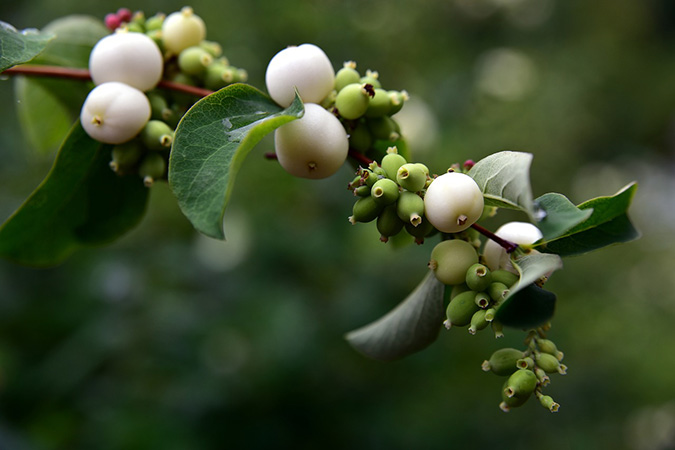
Image by Ulrike Leone from Pixabay
This rule has almost no exceptions. Plants with white berries are plants that do not mess around. Don’t even touch them.
9) Be Humble With Umbels
If you see a plant with umbels,1)Umbel: A flat, disk-shaped, or umbrella-shaped cluster of flowers. you’d better be 110% sure of what it is before you harvest and use it. Elderberry, yarrow, and carrots all form umbels, and they’re great. Poison hemlock has umbels, too, and it will render you in the permanent past tense.
Unfortunately, a lot of these plants will look very similar. I’m not saying that you shouldn’t ever wildcraft them, but you should probably build up your skills on safer plants first. When you’re ready for the umbels, double-check their characteristics every single time.
No matter how smart you are or how much experience you have, anyone can poison themselves if they get cocky or careless. Do yourself a favor when foraging safely, and be humble with the umbels.
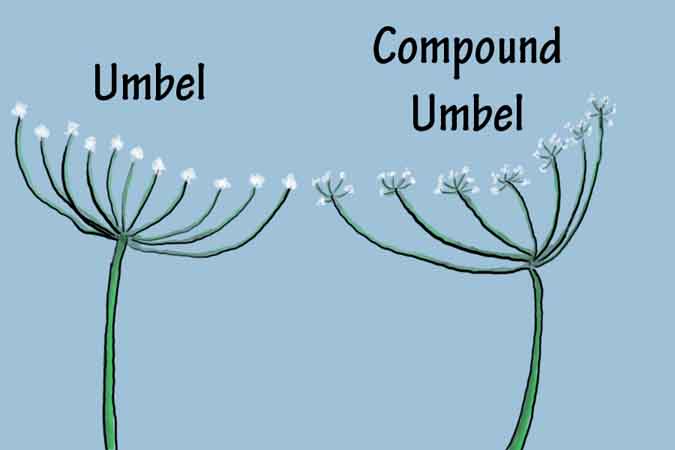
If you see a plant with umbels, be 110% sure of what it is before you harvest and use it.
10) Be 115% Sure About Mushrooms
Mushrooms take the term “poisonous” as a personal challenge. Some of them, like the death cap mushroom, reportedly taste good. To make things worse, mushroom look-alikes can be very tricky to tell apart.
On the flipside, mushrooms are delicious and a lot of fun. They can be wildcrafted safely, if you choose the right type. Some mushrooms, like morels and puffballs, are reasonably safe for beginners to gather. Just exercise due caution, research their appearance and look-alikes, and go out with an experienced guide until you get the feel for it.
11) If It Looks Like an Onion AND Smells Like an Onion, It’s an Onion
This rule works for garlic too, but the plant you find has to both look and smell oniony or garlicy. There are some dangerous look-alikes, but none of them are also “smell-alikes.”
12) All Mustards Are Edible
You can find mustards (Brassicaceae family) all over the world, and they’re all edible. Great. So what does a mustard look like? The surest way to identify them is by the bloom. All mustard family plants have 4 petals and 6 stamens2)Stamen: The pollen-producing reproductive organ of a flower. (4 tall and 2 short). The flowers are often small, so you may need a magnifying lens. Some members of this family may be too spicy to eat in any quantity.
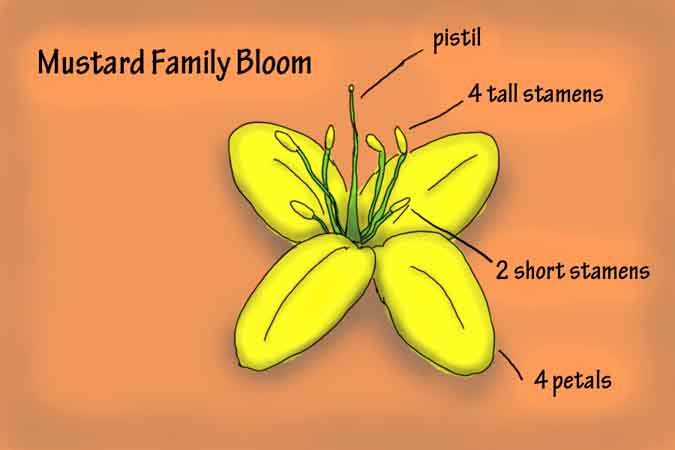
When wildcrafting and foraging safely, it’s helpful to know that all mustard plants are edible (and the easiest way to ID them is by their blooms).
You May Also Enjoy: “Mustard Greens: What You Need to Know Before You Grow (With Recipe)”
13) If It Looks Like a Mint AND Smells Like a Mint, It’s an Edible Mint
Mints (Lamiaceae family) usually have square stems and opposite3)Opposite: A leaf pattern in which leaves appear in pairs, on opposite sides, of a stem. leaves. These leaf pairs will rotate back and forth 90 degrees as they move up the stem. If a plant looks like a mint, but doesn’t smell minty, avoid it. It might be fine. It might not.
14) Seeing an Animal Eat It Does Not Make It Safe
Animals can eat a lot of things that would make us sick or dead. They usually know what’s good for them. They don’t know what’s good for us. Don’t copy the animals.
15) Experience Trumps Theory When It Comes to Foraging Safely
It may be very helpful to watch a video or read a book about wildcrafting. But until you’ve actually gone out to harvest and use a plant yourself, you can’t rely on that skill. Issues will often come up that books and videos can’t prepare you for. Theory is great for laying a foundation of knowledge, but experience is the ultimate teacher.
Whether the grid goes down or you just have a kid with a tummy ache, do you want to know that you’ve read about it in a book or that you’ve successfully harvested and used these plants before?
Hopefully, this guide has encouraged you, rather than scaring you off. Wildcrafting is a wonderful way to empower yourself, and it’s just a really fun way to spend an afternoon. If you follow the rules, and use a bit of common sense, you’ll come back in one piece.
What Do You Think?
What are your favorite plants to wildcraft? Do you have any tips for foraging safely that I missed? Let me know in the comments, and we can get a good plant talk going.
_______________________________________________________
This is an updated version of an article that was originally published on May 5, 2018.
Psst! Our Lawyer Wants You to Read This Big, Bad Medical Disclaimer –> The contents of this article, made available via The Grow Network (TGN), are for informational purposes only and do not constitute medical advice; the Content is not intended to be a substitute for professional medical advice, diagnosis, or treatment. Always seek the advice of a qualified health care provider with any questions you may have regarding a medical condition. If you think you may be suffering from any medical condition, you should seek immediate medical attention. You should never delay seeking medical advice, disregard medical advice, or discontinue medical treatment because of information provided by TGN. Reliance on any information provided by this article is solely at your own risk. And, of course, never eat a wild plant without first checking with a local expert.
The Grow Network is a participant in the Amazon Services LLC Associates Program, an affiliate program designed to provide a means for our team to earn fees for recommending our favorite products! We may earn a small commission, at no additional cost to you, should you purchase an item after clicking one of our links. Thanks for supporting TGN!

Scott Sexton is a TGN Trailblazer, a highly experimental gardener, an unrelenting weed-eater, and a largely non-profit herbalist (much to his wife’s chagrin). When Scott is not teaching foraging classes, testing out theories in the garden, or grazing in the forest, he can be found at his Facebook page, “A Forager’s Guide to the Zombie Apocalypse.”
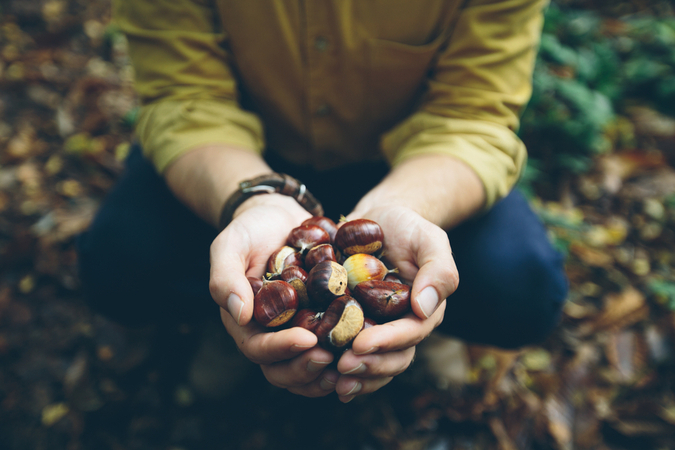
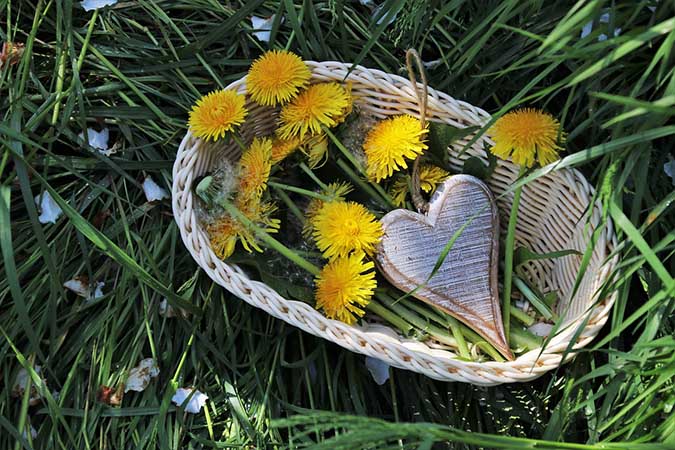
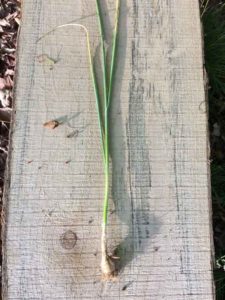
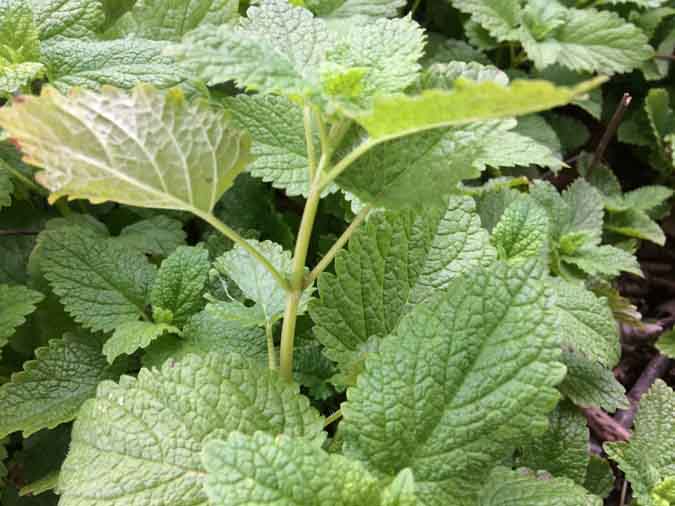







COMMENTS(18)
Awesome article Scott! Once you get into wildcrafting it make the whole world suddenly take on a new dimension, doesn’t it? There is a surprising amount to eat – everywhere 🙂 This time of yea I am loving the spring greens. In Texas the nettles have gone to flower and are pretty much done and I am almost sick of eating chickweed I’ve had so much. Here in Colorado the dandelions are coming in nicely – and when young they aren’t as bitter.
My absolute favorite food to wildcraft is acorns. Lots of calories in these guys. Super easy to collect, not to hard to process (I do it while talking with friends, handing out with family, or watching tv), And yummy! You’ve never eaten pancakes until you’ve had acorn pancakes. 🙂
I’m with you. And if people just knew how much around us is actually food and medicine, we’d have less hunger and more health.
Yes! Spring dandelions are so nice! I’ve been trying to cultivate an appreciation for bitter flavors so that I can enjoy them through more of the year and with less boiling. They’re just so healthy!
I’ve never had acorn pancakes. I’ll have to try them this fall! But I have used them in other dishes, including a failed brownie recipe that we dubbed “acorn puddle cookies”. We have a tree out front that reliably produces nice, big acorns. I feel a bit spoiled by it.
I think some books with good pictures would help.
Absolutely! I really like the Peterson Field Guide series. They have one for edible wild plants and one for medicinal plants. My copies are nearly worn out from all the use I’ve gotten out of them.
Another good one is The Wild Wisdom of Weeds by Katrina Blair. That book only goes over 13 plants, but she really goes into detail about the uses (culinary and medicinal) of each of them.
Great information! Thank you. I was also taught to not eat red berrires unless you can positively identify them. I learned red berries as a danger sign , unless of course, you know what they are.
I think it’s a good idea. Though to be fair, I would probably say the same about any berry, regardless of color. Red could be a warning. Then again, it might be a plant’s way of saying, “Hey! Come eat me and spread my seeds around in your poo.”
Thanks for the comment.
I read somewhere (maybe even another page of this site) that white berries are 90% likely to be poisonous, yellow or orange are 70% likely to be poisonous, red berries are 50/50, blue or purple berries are 70% likely to be safe, and black berries are 90% likely to be edible.
I live in the southwest Chihuahuan Desert and wonder if you have any info on edible plants that are found here. We know about prickly pear, mesquite beans,and the mescal, but that’s about all.
Or, if you know of a good book regarding desert foods I would like to know about it.
That’s a good question. Deserts aren’t one of my strongest environments; definitely an area I’d like to get more personal experience with. I’m not familiar with your particular desert, but offhand I would probably expect yucca and agave. They both have edible uses. Then you might have some Dandelion or stinging nettle…maybe…nearer the water. You might have a plant called Mormon tea. That’s one I wish I had growing out here in Arkansas. I’d expect you to also have a fair chance of having some version of hackberry tree. Shepherd’s purse. Puncture vine. Maybe chia. And you just can’t hardly get away from thistles and sunflowers.
I don’t have any books specifically about desert plants. If you can find a Peterson Field Guide to Edible Wild Plants for your region, that would probably be a good bet. And if you find a plant, and want to see if it grows near you, plants.usda.com has a plant search function that breaks it down by state and county. FYI, It will show Canada, but not Mexica, for whatever reason.
I hope that gives you a start.
James W. CORNETT has a couple of good books about food in the desert.
I looked on Amazon. It looks like he has a bunch of them. Nice tip.
Thanks, this is great information.
Glad you enjoyed it. Thanks for reading.
I was told by a Master Gardner at a plant sale held by our local Extension Service, that I should be judicious in how much chocolate mint I harvested for tea. Many years back, I had become obsessed with cultivating and harvesting my own from containers. I gave it as gifts to teachers etc. I kept it potted up to keep it from spreading. Then a couple years ago, long after the first plants had died, my husband and daughter agreed-it’s (chocolate)mint! It’s good, it’s worth a semi-controlled plot in the yard. .
This latest planting a few years back (20015?)was missing some of the subtlety and tenderness I recalled from my previous plants(circa2007), so I asked the aforementioned “wise one”. She informed me in no uncertain terms to proceed cautiously & “go easy” as some easily mistaken varieties can cause illiteracy (yep, illiteracy!), if eaten in high enough concentrations. Needless to say, it took the joy (as did this seemingly inferior variety) out of my once delightful cuppa.
That’s a new one on me. I know that mints stimulate gastric juices. So they can cause upset stomach if you have an ulcer or another condition that would be aggravated by additional digestive activity. Mints can also be a bit too intense for children. And excessive amounts are cautioned against for pregnant women.
But illiteracy? I’m not going to call “false” on your “wise one”, but it does seem a bit…well, let’s just say unexpected. I mean, I eat mint all the time and I’ve never herba flurbah hebbapitty boo promble-goms. Know what I mean? 😉
Great info! I enjoy not dying!
I am really cautious with carrot family plants. There are a very few that I would trust such as Yarrow. That is a plant that I learned when I was young.
Got it… no white sap or white berries or umbrels…. that was GREAT advice!! Thanks